The Powerful Legacy of Talismans and Amulets in Modern Society
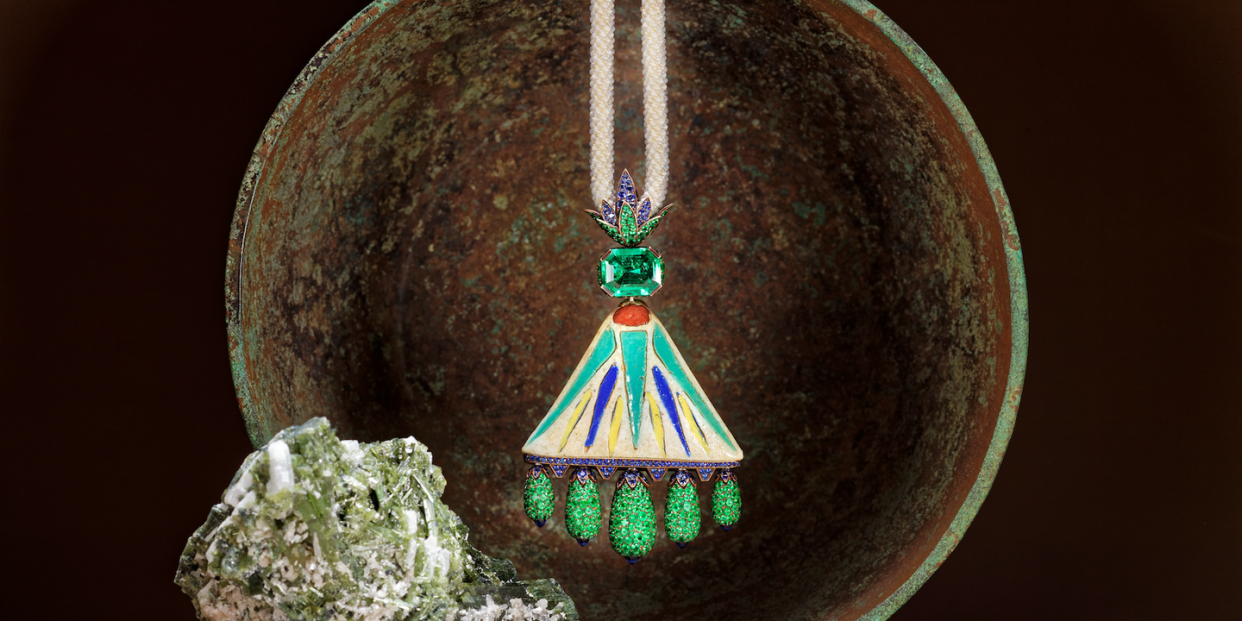
In the ancient world, talismans and amulets were the ultimate power players, summoning protection with their earthly stones and ornaments. Millennia later, we crave these shimmering shields and the mystical beauty they bestow more than ever.
Faience
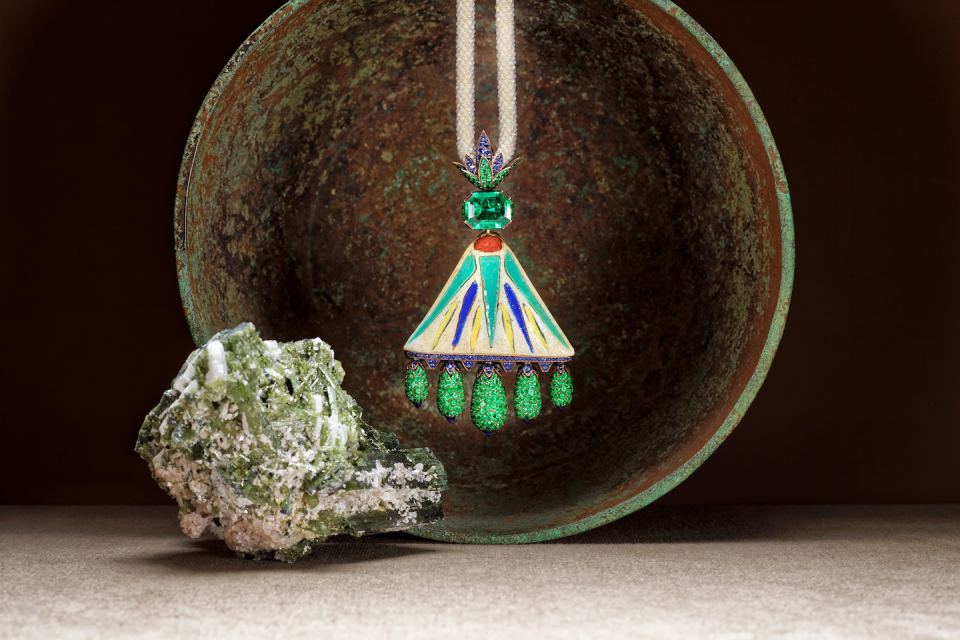
As inventive as they were spiritual, early Egyptians pioneered a glazed ceramic pottery so luminous it was believed to harness the sun’s shimmer and even signify rebirth and eternity. That divinity resonates 2,500 years later in a Dynasty XVIII faience, revived meticulously by Hemmerle and suspended with emeralds and sapphires.“Placing antiquity within a contemporary context,” says owner Christian Hemmerle,“brings to the fore a duality and vivacity that we cherish.”
Lapis
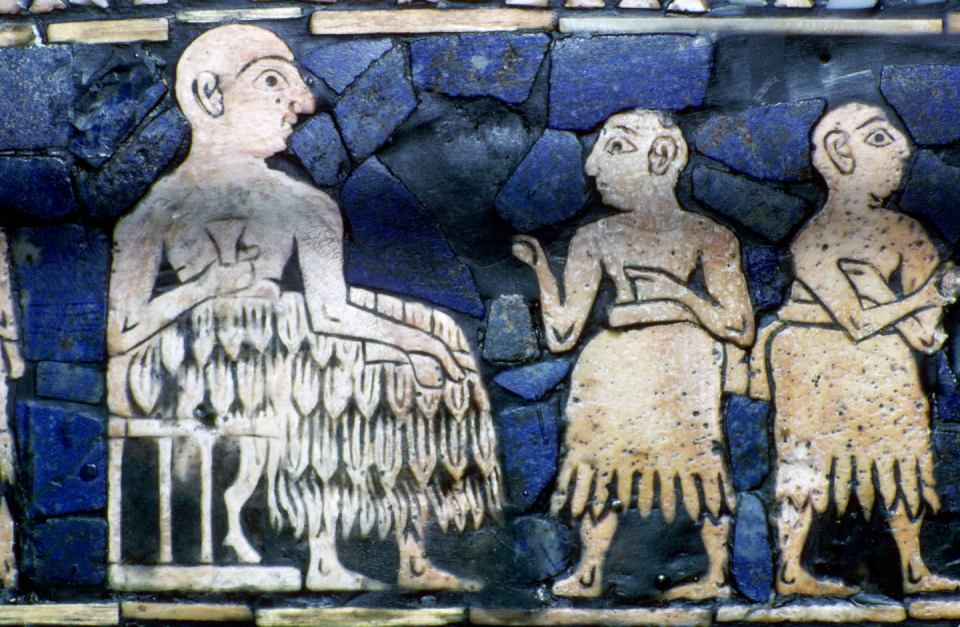
This lazurite-rich stone may be civilization’s longest-reigning powerhouse. Since 7,000 B.C.E., Mesopotamians, Sumerians, Egyptians, Greeks, Chinese, and Romans have all imbued lapis lazuli with potency, including divinity, royalty, and luck. Favored by pharaohs, the stone—carved into thousands of amulets and sacred objects—offered treasured protection en route to the afterlife.
Turquoise

This sky blue mineral revered by the ancient Egyptians and Chinese has been harnessed for thousands of years in cultures around the world to preserve health, bring wealth, and even protect horses via turquoise-embedded bridles. Pueblo, Navajo, and Apache tribes carved it into objects to be strung and worn, while Apache hunters and warriors affixed bows and firearms with turquoise to increase accuracy.
Tigereye
The aptly named quartz with a mesmerizing cat-eye band of reflected light—known as chatoyancy—has long kept watch over various cultures (including Roman soldiers) as a kind of mirrored antidote for the evil eye and harm it might bring.
Agate
This hypnotically banded chalcedony discovered and named by Greek philosopher Theophrastus offers a wide array of talismanic good. Across eras and cultures, agate has been trusted to quench thirst and protect against fever, soothe the mind and promote eloquence, prevent contagion and divert storms, curry the favor of the powerful and vanquish enemies. The stone was even believed to cure scorpion stings and snake bites.
Scarab
Egyptians saw the humble beetle as a symbol of renewal and rebirth; they used scarab amulets to protect the living during daily tasks and the dead as they journeyed to the afterlife. That ethos inspired designer Bibi van der Velden, whose earrings (above) recycle luminous discarded scarab wings. “In the process of working with scarab wings, we also prolong their life,” she says.
Bulla

Co-opted from the Etruscans by the Romans, bullae were pendants worn to fend off evil spirits. Designer Jean Prounis was struck by the calm evoked by Etruscan bulla earrings at an antiques show; her pendant “represents grounding energy imbued with historic significance.”
Moonstone
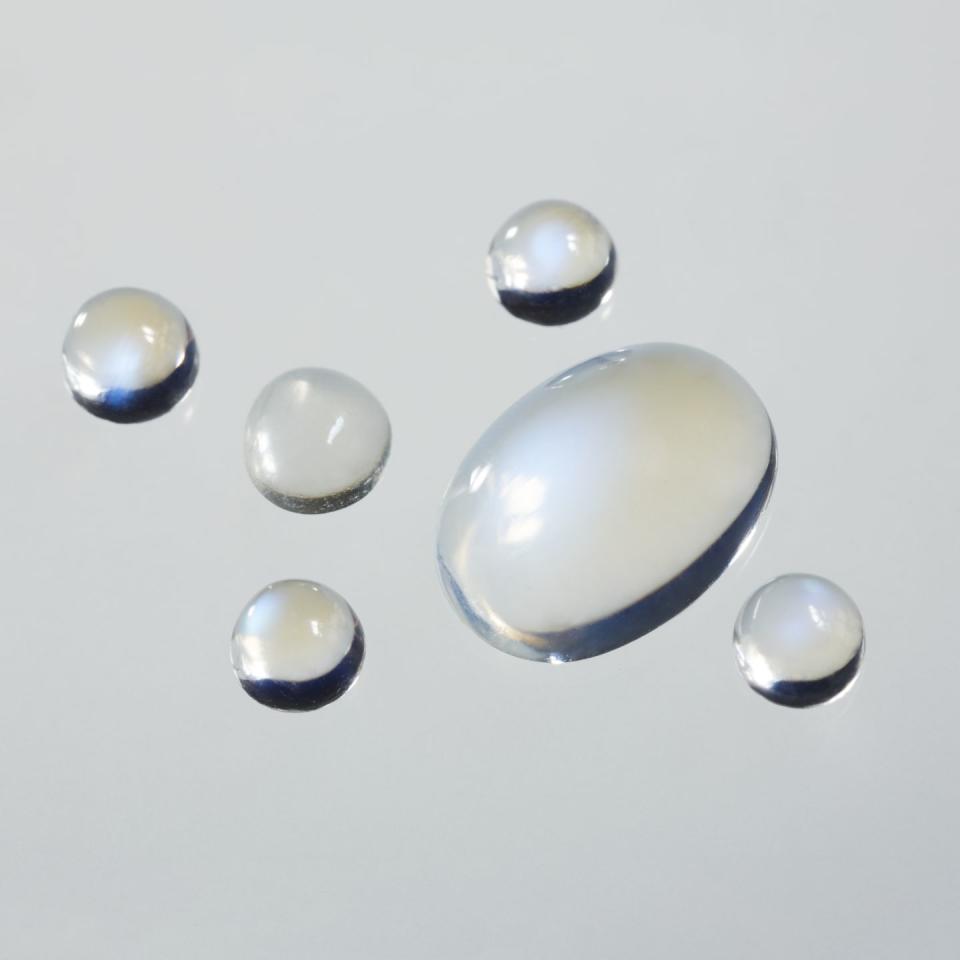
Some stones seem destined for amulet status: Here, layers trap and refract light in an optical sleight of hand, called adularescence, that’s positively lunar—Romans believed the stone was formed from frozen moonlight. It’s no wonder that in moonstruck cultures, the talisman promised power over love, fertility, protection, and sleep.
Amethyst
Ancient Egyptians utilized the gem in amulets for protection against harm, the Greeks credited it with sobriety, and early Christians associated its purple hues with Christ himself. Now, Tony Duquette creative director Hutton Wilkinson shares his and Duquette’s love of the gem and its metaphysical qualities. “An amethyst worn by day has the power to heal,” he says. “Worn by moonlight, it’s said to bring forth dexterity, bravery, and honor.” That’s stunning magic.
Beads
Linked to the earliest record of humankind, beads have been our constant companions, from earthly use in trade to celestial employ in counting prayers. And they have served to this day, strung together, as ready-to- wear amulets for numerous protections.
Evil Eye
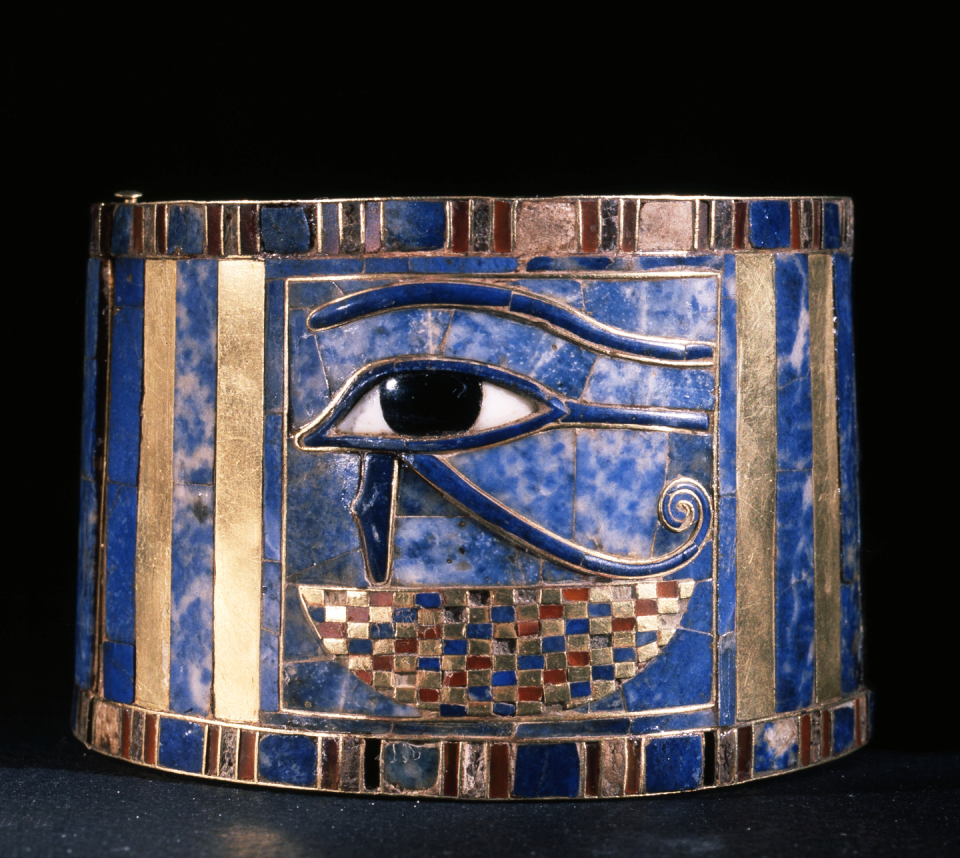
An eye for an eye, it might be said: Bad spirits summoning disease and disaster through what was called an “evil eye” were repelled by eye-like talismans that protectively stared right back.
The article was originally featured in our July/August issue of VERANDA. Produced by Rachael Burrow and written by Tracy Minkin.
You Might Also Like

